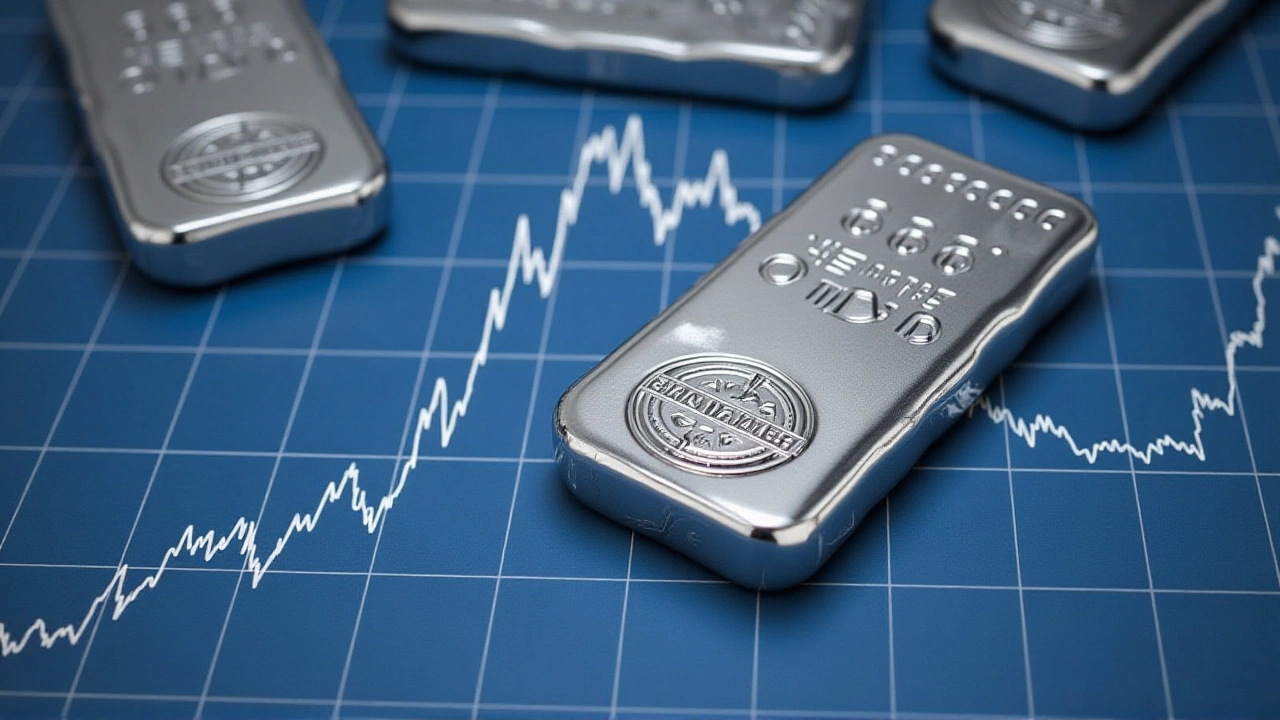Silver Prices – Latest Trends, Factors & Investment Insights
When tracking Silver Prices, the daily or monthly value of silver expressed in a chosen currency. Also known as silver spot price, it serves as a benchmark for investors, jewelers, and manufacturers alike. Understanding how Silver a precious metal prized for its conductivity, reflectivity and affordability moves in the global market helps you make smarter buying or selling decisions.
Silver doesn’t float in isolation; it lives inside the Commodity Market the arena where raw materials like metals, energy and agriculture are traded. The market’s supply‑demand balance, speculative trading, and macro‑economic headlines all play a part. One clear link is that inflation often pushes investors toward metals as a hedge. When consumer prices rise, the purchasing power of cash drops, so many turn to silver because its value tends to hold up better. In turn, the Investment the act of allocating money to assets expecting future returns community watches these price shifts closely, using silver to diversify portfolios or protect wealth.
Key Drivers Behind Silver Price Movements
Three forces dominate the price story. First, industrial demand—silver’s unmatched conductivity makes it essential for electronics, solar panels, and medical equipment. A surge in renewable‑energy projects or a new tech rollout can lift demand, nudging prices up. Second, investment sentiment. When geopolitical tension spikes or stock markets wobble, traders often buy physical silver or futures contracts, creating a price boost. Third, supply constraints. Mining output, recycling rates, and mining regulations affect how much silver reaches the market. A strike in a major mining region or stricter environmental rules can tighten supply and drive prices higher.
These elements interlock: higher industrial use raises demand, which can attract more investors, further tightening supply if mining doesn’t keep pace. That chain of cause‑and‑effect is why you’ll see headlines like “Solar growth fuels silver rally” or “Investor panic spikes metal prices.” The relationships form simple semantic triples: Silver Prices reflect Industrial Demand; Inflation influences Investor Behaviour; Commodity Market determines Supply Availability. Understanding these links lets you anticipate short‑term spikes or longer trends.
Beyond the big picture, look at regional factors. India’s growing middle class is buying more jewellery, which includes silver ornaments. In the U.S., ETFs that hold silver bars make it easier for retail investors to gain exposure without storing metal. Meanwhile, China’s manufacturing sector can swing supply numbers dramatically. These geographic nuances add layers to the global price picture and explain why a single news item can cause a ripple across markets.
If you’re new to silver as an asset, start with a few practical steps. Check the daily spot price on a reliable financial site, compare it to historical averages, and note any recent policy changes in major mining countries. Consider whether you want physical silver—coins, bars, jewellery—or paper exposure like futures or ETFs. Each route has its own cost structure and storage considerations. For seasoned investors, watch the open interest in silver futures; a rising open interest often signals growing market participation, which can precede price moves.
Our collection below brings together a mix of articles that touch on these themes from different angles. You’ll find pieces that break down the latest market data, stories on how tech trends affect metal demand, and even a few quirky takes that show how silver’s price can intersect with culture, sports, and everyday life. Whether you’re looking for quick price snapshots, deeper analysis of macro forces, or tips on how to add silver to your portfolio, the posts ahead give you a well‑rounded view.
Ready to dive deeper? Scroll down to explore the full range of insights and see how the forces we’ve discussed play out in real‑world scenarios.
